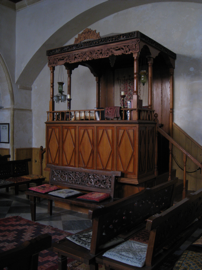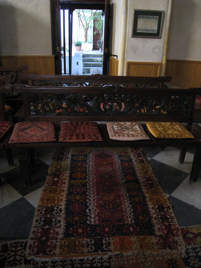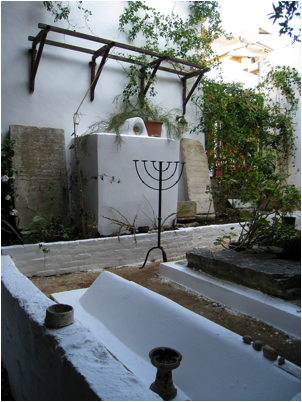Sixty-five years ago today, Soviet troops walked under the sign "Arbeit Macht Frei" not knowing the cruel joke the Nazis were making. Once inside, they found "hundreds of thousands of men's suits, more than 800,000 women's outfits, and more than 14,000 pounds of human hair." The Red Army found emaciated survivors clinging to threads of hope, as there was nothing else to hold on to. Unfortunately, this was not a new feeling for Jews and it wouldn't be the last time Jews were the target of hatred.
It's no revelation that throughout history Jews have been the literal and figurative whipping boys around the world. From civilization to civilization, from culture to culture, Jews have been on a millennia-long bad luck streak and so far, in this new year, there have already been two arson attacks on the only Jewish temple in Crete.  Last summer, my wife and I went on our honeymoon to Greece, spending a week bouncing between Athens, Crete and Santorini. While on Crete, Greece's largest island, we found ourselves gravitating toward Temple Etz Hayim. I'm not a religious person, but standing in the sanctuary, connecting me to the past, gave me the chills. As a student of the Holocaust and the grandson and nephew of Holocaust survivors, this particular synagogue ushered in a moment of familial recognition I have not had since my Bar Mitzvah.
Last summer, my wife and I went on our honeymoon to Greece, spending a week bouncing between Athens, Crete and Santorini. While on Crete, Greece's largest island, we found ourselves gravitating toward Temple Etz Hayim. I'm not a religious person, but standing in the sanctuary, connecting me to the past, gave me the chills. As a student of the Holocaust and the grandson and nephew of Holocaust survivors, this particular synagogue ushered in a moment of familial recognition I have not had since my Bar Mitzvah.
In 1944, the Nazis wiped out about 2,300 years of Jewish life on Crete by sending 300 Jews to their deaths (which actually came from a British U-Boat shooting two torpedo missiles through the ship the Germans were transporting the Jews on) and destroying the temple. It stood barren and desecrated for more than 50 years, until 1996 when the World Monument Fund selected it as one of 100 endangered sites in the world for immediate conservation. The shul was re-dedicated in 1999 and the island's miniscule Jewish population now have a place to worship. At least, they did until January 5th when the first of two arson attacks occured.

The first fire broke out at 1:15 a.m. on Jan. 5. The culprits broke into the synagogue's courtyard and set fire to an outdoor wooden ladder which leads to the library. The fire was extinguished immediately before it threatened the temple and the adjoining library, which features roughly 1,600 rare books and manuscripts. A bottle with a flammable liquid still burning was found at the scene by fire-fighters.
The second fire broke out at 4 a.m. on Jan. 16 and destroyed digital discs, four computers, tapes with Jewish music and books. Both attacks destroyed a total of 2,500 books.
In the ensuing days and weeks, several suspects have been arrested but the damage sustained has crippled the temple. Besides the destruction of information - both electronic and text - the roof of the synagogue has been severely damaged.
Today's Holocaust Memorial Day was created to "reflect on what can happen when racism, prejudice and exclusionary behaviour are left unchecked." While the Jews may be the most known victims of genocide, they are not the most recent.
Mass murders have been reported over the past 65 years in remote (at least in Western terms) places of the world and we should use the lessons of the past to prevent it from happening again. "Never forget" means to live in the past; we must start looking at the present in order to have a clear future.